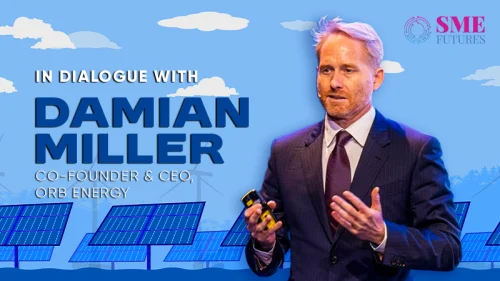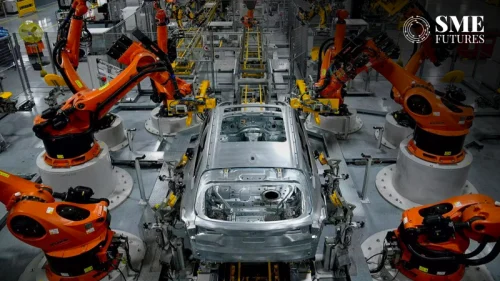In a world grappling with escalating resource scarcity and environmental degradation, the linear “take-make-dispose” model is no longer viable. The circular economy has emerged as a transformative solution, reshaping the B2B landscape and presenting a compelling opportunity to harmonise profitability with environmental stewardship. This paradigm shift is not merely a trend; it’s a strategic imperative that is redefining how businesses operate and create value.
At its core, the circular economy aims to decouple economic growth from resource consumption by keeping materials in use for as long as possible, minimising waste, and maximising resource utilisation throughout their lifecycles. This is achieved through a multi-pronged approach encompassing design innovation, resource recovery, and collaborative business models.
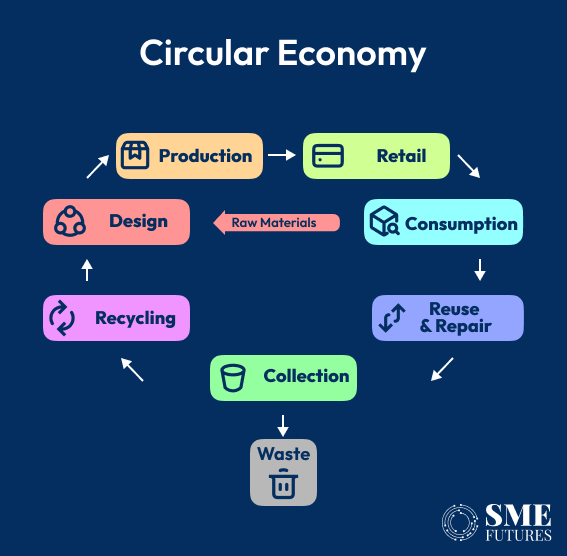
Unlocking value from waste: The B2B goldmine
The circular economy is revolutionising B2B operations by reimagining waste as a valuable resource. Companies are discovering innovative ways to extract value from what was once considered trash, turning it into a new revenue source and fostering resilience in their supply chains.
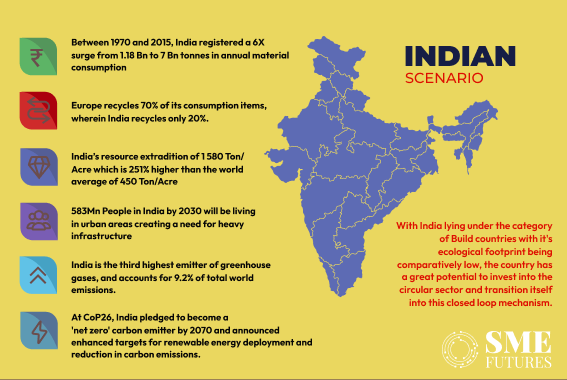
Attero Recycling, India’s largest e-waste recycler, have achieved a remarkable 98 per cent material extraction efficiency from e-waste, recovering precious metals and other valuable components.
“We effectively integrate the principles of reduce, reuse, and recycle in e-waste management processes by leveraging substantial capacity and technological innovations. This not only reduces the need for virgin materials but also provides a stable source of high-quality recycled materials for other industries,” says Nitin Gupta, CEO, Attero Recycling.
Similarly, CEID, a pioneer in biogas production, is transforming organic waste into clean energy and valuable byproducts. “Our approach to sustainability is not just a policy but a core aspect of our services and operational model,” underlines Abhinav Govil, DGM-Marketing at CEID.
“We focus on minimising waste at the source by optimising processes for industries, helping to reduce the generation of waste materials. We design our products to be energy-efficient, reducing overall energy consumption and the carbon footprint associated with waste management,” he adds.
Circular business models
The circular economy is spawning a new breed of business models that prioritise resource efficiency and long-term customer relationships.
Philips’ “Circular Lighting” initiative exemplifies this shift. By offering lighting as a service, Philips retains ownership of the products, ensuring efficient maintenance, upgrades, and recycling. This model not only generates recurring revenue for Philips but also reduces waste and lowers the total cost of ownership for clients.
Another innovative approach is being seen in the packaging industry. BENZ Packaging has developed a range of eco-friendly packaging solutions, including biodegradable and compostable bags. Chaitanya Chopra, Director of BENZ Packaging, explains, “Our motivation to adopt waste management practices stems from our commitment to environmental stewardship and our goal to contribute to the conservation of resources for future generations.”
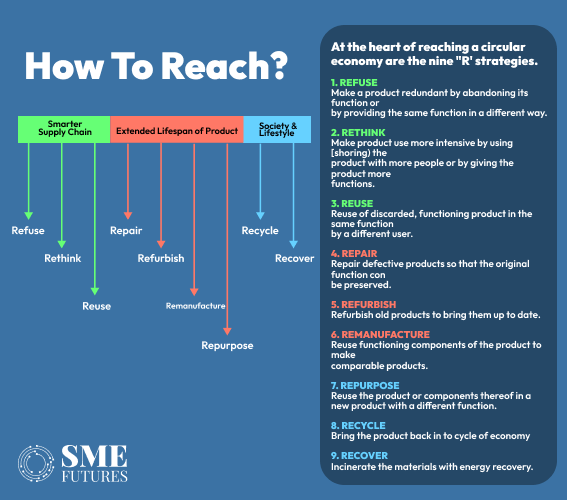
“We minimise waste generation by optimising our production processes to reduce material waste and energy consumption. We also use advanced manufacturing technologies to create precise and efficient packaging solutions,” he adds.
“We also identify and repurpose waste materials by implementing a comprehensive waste management system that includes sorting, recycling, and reusing materials wherever possible. For instance, our paper-based cushioning and void fill products are made from recycled paper, reducing the need for new raw materials and diverting waste from landfills,” he says.
The financial case for circularity: Turning waste into profit
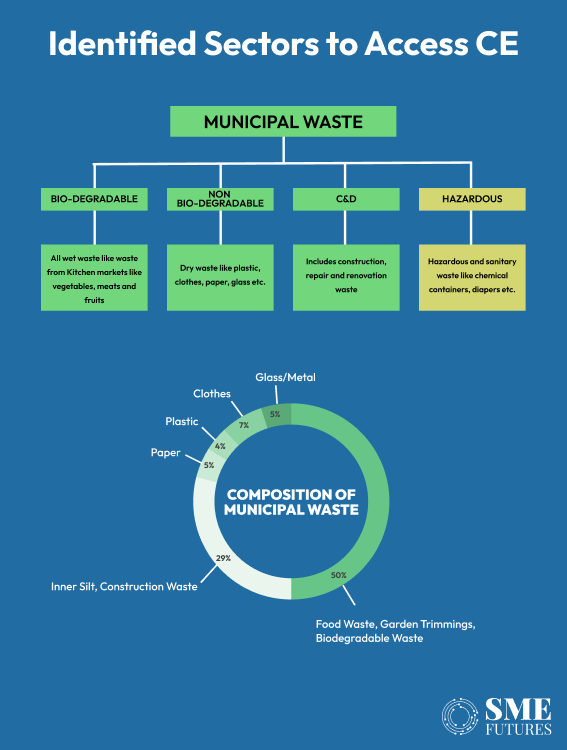
Embracing circularity is not only environmentally responsible but also financially rewarding. By reducing waste, optimising resource use, and extending product lifecycles, companies can achieve significant cost savings. Moreover, circular business models like PaaS and remanufacturing open new revenue streams and tap into growing consumer demand for sustainable products.
Abhishek Agashe, Co-founder & CEO of Elima, says “Focusing on building smart infrastructure for waste management and recycling highlights the economic potential of circularity.”
“We realised that to truly make a significant impact in the circular economy, we needed to establish a vertically integrated company capable of handling multiple product and material categories at scale. The existing landscape showed that companies were operating in silos, lacking the integration needed for efficient resource utilisation. To address this gap, we set out to establish a smart infrastructure company equipped to handle and process strategic material categories. Our approach is to develop proprietary digital and processing technology that optimises procurement, pre-processing, and refining processes,” he adds.
Overcoming challenges
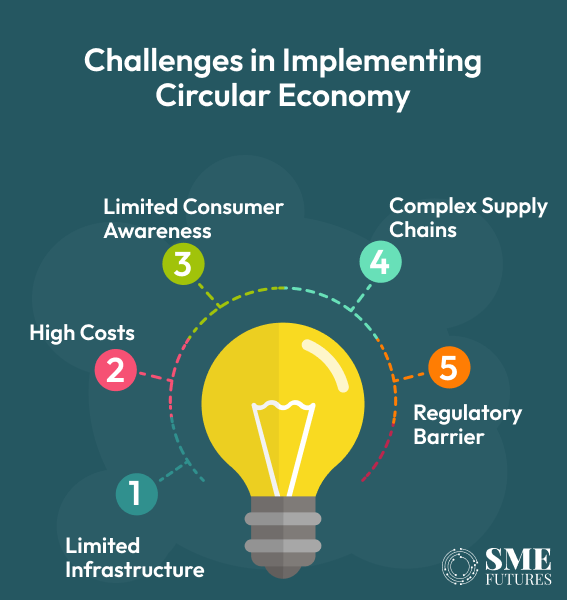
The transition to a circular economy is not without its challenges. Companies must grapple with infrastructure gaps, supply chain complexities, and evolving regulatory landscapes. However, these challenges also present opportunities for innovation and growth.
Investing in circular infrastructure, such as recycling facilities and repair centres, can create jobs and stimulate economic activity. Leveraging technology to track and manage materials throughout their lifecycles can enhance transparency and efficiency in the supply chain. Engaging with policymakers can help shape a supportive regulatory environment for circular practices.
The circular economy is not a distant aspiration; it’s a present-day reality with the power to transform the B2B landscape. By embracing circularity, businesses can drive innovation, unlock new revenue streams, mitigate risks, and contribute to a more sustainable and prosperous future.
“The most significant barriers to adopting advanced waste management practices include financial constraints, lack of awareness, and resistance to change.” says Anup Garg, Founder and Director of World of Circular Economy (WOCE)
To overcome these challenges, companies should advocate for increased financial incentives and support from governments, such as tax breaks and subsidies. Additionally, the focus should be on educating businesses about the long-term benefits of sustainable practices and providing them with the tools and strategies to implement these changes effectively. By demonstrating the economic and environmental advantages of advanced waste management, we can encourage broader adoption and drive systemic change,” adds Garg.
“Collaborations with governments, NGOs, and other stakeholders is crucial for driving systemic changes in waste management practices. The circular economy requires a collective effort from all stakeholders to create a truly regenerative and resilient economy,” he adds.
Collaboration for circular success
The circular economy is not a solo endeavour; it requires collaboration across the value chain. Businesses are forging partnerships with suppliers, customers, and even competitors to create circular supply chains that ensure resources are kept in use for as long as possible.
World of Circular Economy (WOCE), a consulting firm specialising in sustainability, plays a crucial role in facilitating these collaborations. They provide businesses with the expertise and tools to measure and manage their environmental impact, helping them transition to circular practices.
Anup Garg emphasises, “Governments play a pivotal role by creating regulatory frameworks and providing financial incentives such as tax breaks and grants, which encourage businesses to adopt sustainable practices.”
“We have collaborated with Public Sector Undertakings (PSUs) to manage their environmental impact through tailored sustainability strategies, GHG accounting, decarbonisation roadmaps, and carbon offsetting solutions. Additionally, NGOs are vital in raising awareness and fostering community engagement in sustainability efforts. Companies can benefit significantly from engaging with NGOs to enhance their sustainability initiatives and drive public awareness,” he asserts.
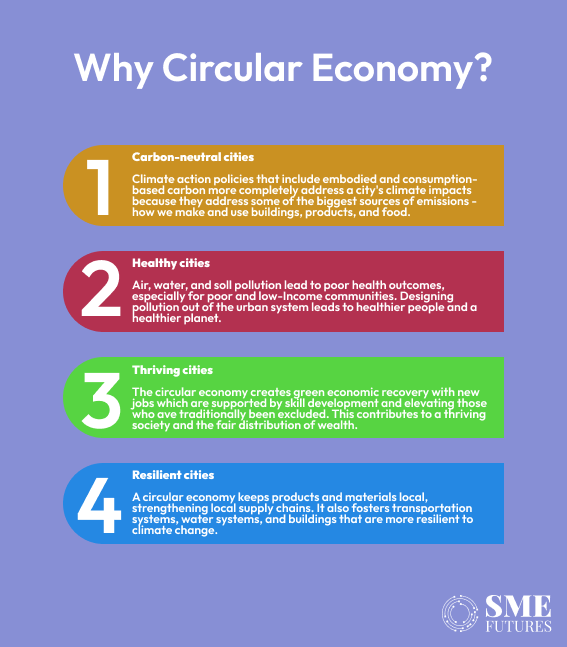
The circular economy is not a passing trend, but a transformative force reshaping the B2B landscape. The examples from Attero Recycling, CEID, Philips, Benz Packaging, and Elima demonstrate that circularity is not only achievable, but also profitable. By embracing waste as a resource, forging innovative partnerships, and investing in circular infrastructure, businesses can unlock new sources of value, enhance their resilience, and contribute to a more sustainable future.
Collaboration is key as the transition to a circular economy requires a collective effort from businesses, governments, NGOs, and all stakeholders. By working together, we can overcome challenges, develop supportive policies, and create a truly regenerative and resilient economy.
The message to B2B leaders is clear: the future is circular. Those who embrace this paradigm shift will not only thrive in the face of resource scarcity and environmental pressures but will also emerge as leaders in a new era of sustainable business. The time to act is now.








